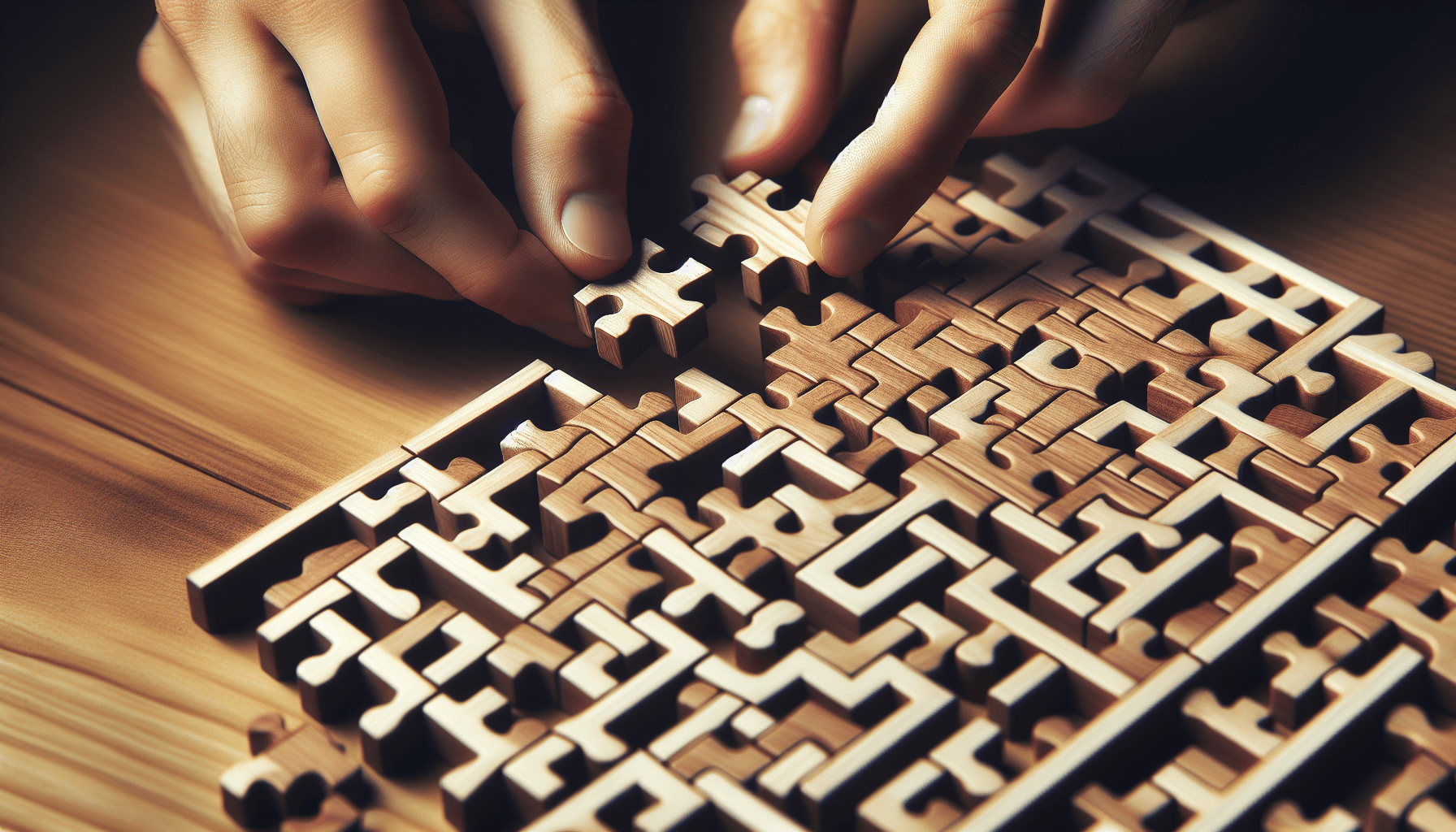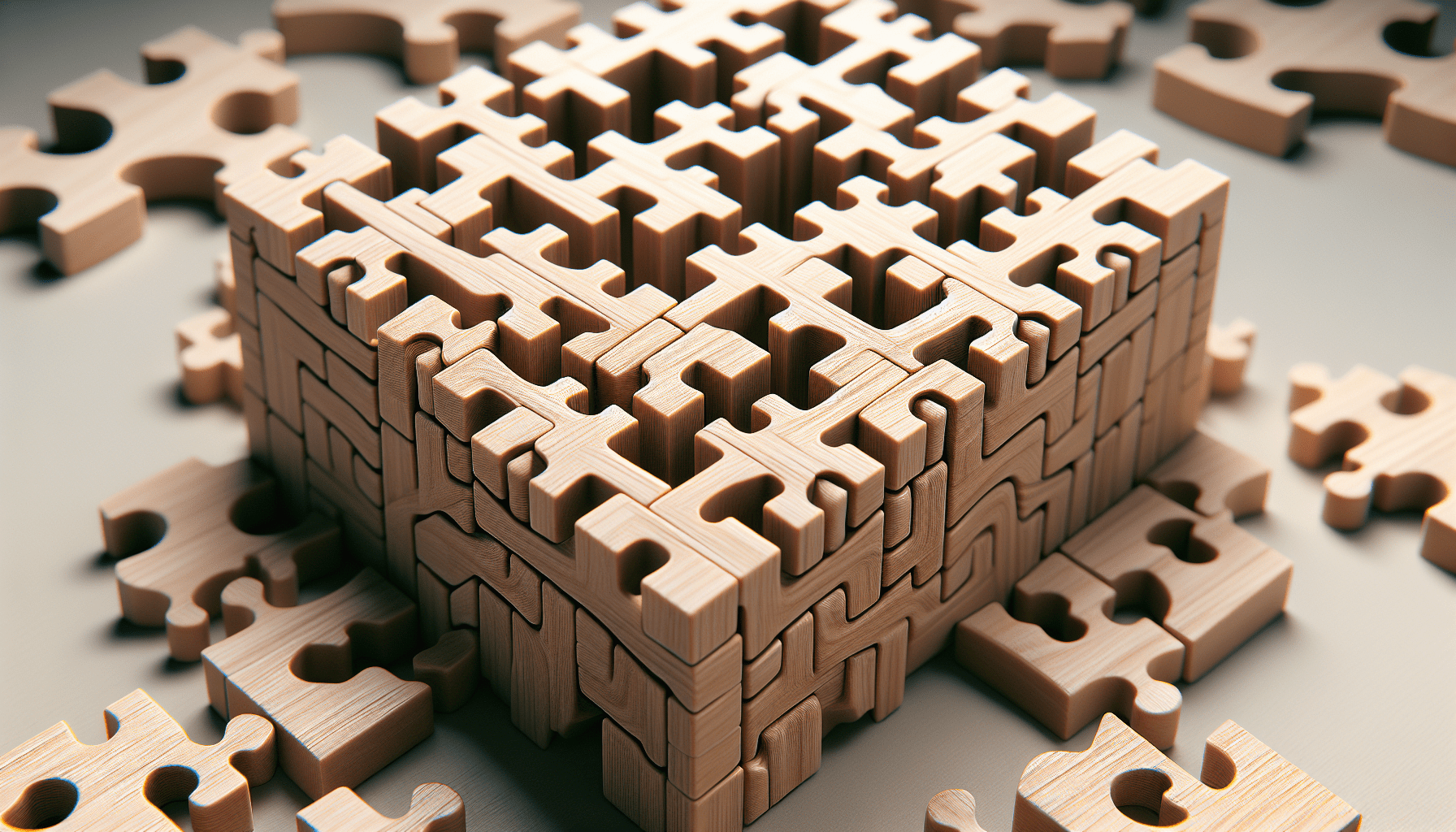Have you ever wondered how to start a 3D wooden puzzle, especially ones made by acclaimed brands like Robotime, Rokr, Ugears, Wood Trick, EWA, Vitascope, Wooden City, or Handmadecity? Tackling your first 3D wooden puzzle can be both exciting and daunting. With the right approach, you can turn this seemingly complex task into a rewarding and enjoyable experience. Let’s walk you through it!
Understanding the Basics of 3D Wooden Puzzles
First things first, knowing what you’re dealing with is imperative. 3D wooden puzzles are like a mix of traditional flat puzzles and model kits. They involve assembling pieces into a three-dimensional structure, which can range from intricate buildings and vehicles to playful contraptions and even functional mechanical models.
What Are the Common Brands?
Several brands are known for their quality and variety of 3D wooden puzzles. Some of the notable ones include:
| Brand | Characteristics |
|---|---|
| Robotime | Known for their detailed designs and diverse themes. |
| Rokr | Offers mechanical and steampunk-themed puzzles. |
| Ugears | Specializes in mechanical models that often move or operate. |
| Wood Trick | Focuses on intricate designs, often with a playful element. |
| EWA | Known for artistic and engineering models. |
| Vitascope | Renowned for their cinematic-themed puzzles. |
| Wooden City | Offers urban and architecture-themed puzzles. |
| Handmadecity | Focuses on unique handmade designs. |
Each of these brands brings its own flair and complexity to the table, ensuring there’s something for everyone.
Choosing the Right Puzzle for You
When starting, selecting a puzzle that matches your skill level and interests can make a world of difference.
Assess Your Skill Level
If you’re new to 3D wooden puzzles, opt for simpler designs with fewer pieces. Advanced puzzles may require more patience and a bit of prior experience.
Consider Your Interests
Do you enjoy mechanical gadgets, historical buildings, or whimsical designs? Pick a puzzle that aligns with your personal interests to make the assembly process more engaging.

Gathering the Necessary Tools
While most 3D wooden puzzles come with everything you need, having a few extra tools on hand can make the process smoother.
Essential Tools
- Craft Knife: For precise cutting and trimming.
- Sandpaper: To smooth out any rough edges.
- Glue: Although many puzzles are designed to interlock tightly, having wood glue can help secure parts if needed.
- Tweezers: Useful for handling small pieces.
- Ruler: To ensure exact measurements if required.
Keeping these tools nearby can save you time and help you achieve a cleaner finish.
Setting Up Your Workspace
A well-organized workspace can significantly enhance your puzzle-building experience.
Optimal Workspace Conditions
Choose a flat, stable surface with plenty of light, away from high-traffic areas. This way, you can leave your puzzle out without the risk of it being disturbed.
Organizational Tips
- Separate Pieces by Type: Lay out the pieces and separate them by type or section.
- Use Small Containers: These can help keep tiny parts from getting lost.
- Keep Instructions Handy: Have the instruction manual within reach for easy reference.

Reading the Instructions
Before diving into the assembly, read through the instructions. Familiarizing yourself with the steps can help you identify any potential challenges ahead.
Step-by-Step Guide Review
Most 3D wooden puzzles come with detailed step-by-step guides. Take the time to review these, and don’t hesitate to consult any online resources or videos for additional help.
Understanding Symbols and Icons
Instruction manuals often use symbols or icons. Take note of what each symbol represents, as this will guide you through the more intricate parts of the build.
Assembling the Puzzle
Now that you’re all set, it’s time to start building. Here’s a detailed guide on how to proceed.
Start with the Base
Building the base first can give you a solid foundation and make following the instructions easier. It also provides stability for the remaining structure.
Work Through Sections
Instead of jumping around, work through each section as indicated in the instructions. Complete one step fully before moving on to the next.
Double-Check Fit
Before gluing or firmly pressing pieces together, double-check that they fit perfectly. Misaligned pieces can affect the entire build.
Sand and Trim
If a piece doesn’t fit smoothly, use sandpaper to trim it down. Patience is key here—rushing could lead to broken or damaged parts.
Common Challenges and Troubleshooting
Everyone encounters difficulties now and then. Here are some common challenges and how to troubleshoot them.
Misaligned Pieces
If pieces are not aligning, revisit the instructions to ensure you’re following them correctly. Sometimes, taking a step back helps you see where the mistake might be.
Loose Fits
If parts are not fitting snugly, consider using a small amount of glue to secure them. Just be cautious, as excessive glue can lead to a messy appearance.
Missing Pieces
In rare cases, pieces can be missing. Contact the manufacturer for replacements. Many brands offer excellent customer support and may send the missing parts free of charge.
Caring for Your Finished Puzzle
After investing time and effort into assembling your 3D wooden puzzle, you’ll want to keep it in great condition.
Displaying Your Puzzle
Choose a display area that’s dust-free and away from direct sunlight to prevent fading or warping of the wood.
Routine Maintenance
Dust your puzzle regularly. A soft brush or a can of compressed air works well for this. Avoid using water or chemical cleaners, as they can damage the wood.
Repairs and Adjustments
Should any part become loose over time, a drop of wood glue can secure it. If parts warp, gently sanding and reshaping them can help restore their original form.
FAQs
How Long Does it Take to Assemble a 3D Wooden Puzzle?
The time it takes can vary greatly depending on the complexity of the puzzle and your experience level. Simple puzzles might take an hour or two, while more intricate designs could take several days.
Can Children Assemble 3D Wooden Puzzles?
Many 3D wooden puzzles are suitable for older children, particularly those aged 10 and up. However, always check the recommended age range provided by the manufacturer to ensure it’s appropriate.
Do I Need Special Skills to Assemble a 3D Wooden Puzzle?
No specific skills are required, but patience and attention to detail are crucial. Following the instructions carefully and taking your time will yield the best results.
Where Can I Buy 3D Wooden Puzzles?
You can find 3D wooden puzzles at hobby shops, online retailers, and sometimes even in bookstores. Websites like Amazon, Etsy, and the official websites of the mentioned brands are great places to start.
How Much Do 3D Wooden Puzzles Cost?
Prices can vary widely based on the complexity and brand. Simple puzzles might cost as little as $10, while more intricate or larger puzzles can exceed $100.
Wrapping It Up
Starting a 3D wooden puzzle can be an immensely satisfying hobby that sharpens your attention to detail while providing a creative outlet. By understanding the basics, preparing adequately, and approaching the assembly methodically, you can transform a box of wooden pieces into a captivating three-dimensional marvel.
So, are you ready to tackle your first 3D wooden puzzle? With these tips and a touch of perseverance, your masterpiece awaits!